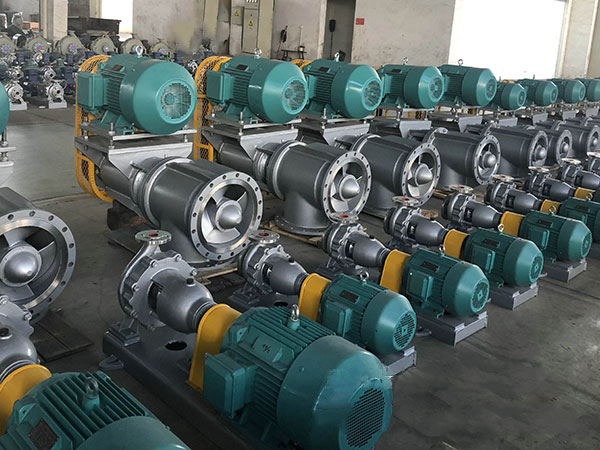Axial flow pump is a type of pump mainly used to transport large flow and low head fluid. It is simple in structure, easy to move, easy to operate, usually used in large-scale cooling water circulation system, industrial water supply system, sewage system and other occasions. This article describes how to properly install and commission an axial flow pump.
1. Preparation before installation
1) The selection of the axial flow pump is reasonable. Before installation, the installer should determine whether the selection of the axial flow pump is reasonable. Reasonable selection will help the normal work and long-term stable operation of the axial flow pump.
2) Prepare the necessary tools. The tools that need to be used during the installation process, such as hole openers, wrenches, locators, hooks, etc., must be prepared in advance for easy use.
3) Make preparations for on-site installation. Before installing an axial flow pump, the site must be measured to ensure that the installation location is correct and the site environment is safe.

2. Basic installation of axial flow pump
1) Preparation for foundation installation Installers should carefully read the installation manual of the axial flow pump to understand the detailed requirements of the foundation installation, and even conduct on-site trial installation in advance.
2) Determine the installation position of the axial flow pump. It should be considered that the axial flow pump has enough operating space after installation. Normally, the inlet of the axial flow pump should be aligned with the inlet pipe, and the outlet should be aligned with the outlet pipe.
3) Adjustment of the normal direction of the paragraph The axial flow pump can be installed at a height from the ground or the foundation plane. Usually, cement concrete foundation is used, and reinforcement measures are made according to the size of the axial flow pump to ensure the safety of the axial flow pump.
4) Connection between the axial flow pump and the transformer The transformer should be placed not far from the running unit, and the geographical location should not be too far away. The installation of the transformer needs to consider the length of the cable and whether it can meet the operation requirements of the cable.
5) Mechanical connection of the axial flow pump Before making the mechanical connection, the axial flow pump needs to be inspected to ensure that the pipeline of the axial flow pump is connected correctly and all loose parts are tightened.
3. Debug the axial flow pump
1) Pre-acceptance and debugging Before turning on the axial flow pump, it is necessary to carefully check whether each connection is tight and whether there is any leakage or leakage.
2) Formal commissioning stage Turn on the axial flow pump and start the actual commissioning work. The installer should pay close attention to the running status of the axial flow pump, observe whether the liquid level, flow rate, pressure and other indicators meet the requirements. If there is an abnormal situation, stop the pump in time to find out the cause, and take corresponding measures to solve the problem. After commissioning, the indicators of the axial flow pump should be checked to ensure that the requirements are met. If there is a problem, it should be checked in time and corresponding measures should be taken to adjust it.
The above are the basic steps for the installation and commissioning of axial flow pumps. Installers should understand and master these technologies in practice. Only through reasonable installation and commissioning work can the normal operation and long-term stable operation of the axial flow pump be guaranteed.




